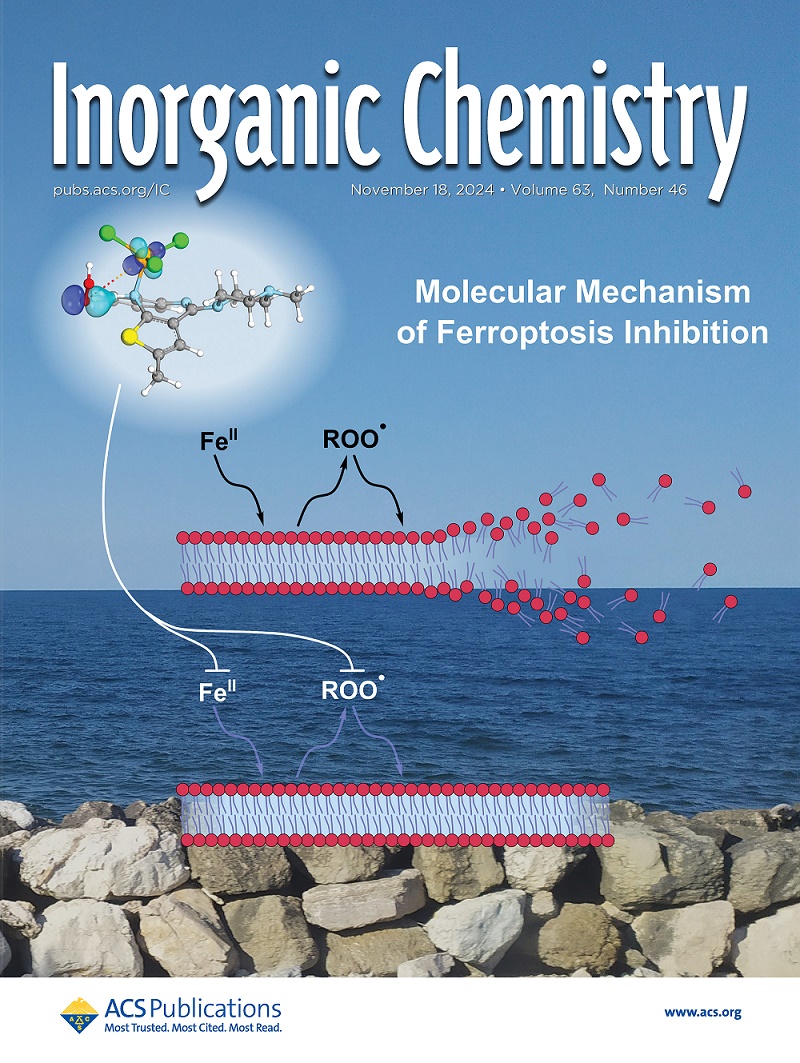Modulation of S and N Active Sites for Coordination Polymers to Achieve Enhanced Hg2+ Sensing Performances
IF 4.3
2区 化学
Q1 CHEMISTRY, INORGANIC & NUCLEAR
引用次数: 0
Abstract
It is challenging and vital to develop coordination polymers (CPs) with an outstanding sensing performance. In this work, CP-based sensors with active S and N sites are first exploited. Three new Cu-CPs [Cu(L)(SCN)2·2DMF]n (1), [Cu(L)(SCN)·2DMF]n (2), and [Cu(L)(CN)·2DMF]n (3) were successfully synthesized by 9,10-bis(di(pyrimidin-5-yl)methylene)-9,10-dihydroanthracene (L) and SCN–/CN– ligands. 1 demonstrates a 1D wavelike chain, fabricated by L bridges linking with Cu(SCN)2 units. 2 exhibits a 2D (3,3)-connected network fabricated by SCN–, 3-connected L, and Cu units. 3 exhibits a 3D framework, built by 4-connected Cu centers, CN–, and L bridges. 1–3 have good water, pH, and thermal stabilities. 1 and 2 have uncoordinated S and N active sites and can detect Hg2+ through the fluorescence enhancing (“turn-on”) effect. Meanwhile, 3 only has uncoordinated N active sites and shows a negative Hg2+ sensing ability. 1 and 2 have ultrahigh Hg2+ sensing sensitivity and selectivity. The KSV and LOD of 1 toward Hg2+ are about 3 and 5 times superior to those of 2, separately. 1 and 2 represent the first S- and N-rich CP-based sensors and exhibit an excellent “turn-on” Hg2+ sensing capacity. Their “turn-on” Hg2+ sensing mechanism and difference sensing performances are discussed in detail.

求助全文
约1分钟内获得全文
求助全文
来源期刊

Inorganic Chemistry
化学-无机化学与核化学
CiteScore
7.60
自引率
13.00%
发文量
1960
审稿时长
1.9 months
期刊介绍:
Inorganic Chemistry publishes fundamental studies in all phases of inorganic chemistry. Coverage includes experimental and theoretical reports on quantitative studies of structure and thermodynamics, kinetics, mechanisms of inorganic reactions, bioinorganic chemistry, and relevant aspects of organometallic chemistry, solid-state phenomena, and chemical bonding theory. Emphasis is placed on the synthesis, structure, thermodynamics, reactivity, spectroscopy, and bonding properties of significant new and known compounds.
 求助内容:
求助内容: 应助结果提醒方式:
应助结果提醒方式:


